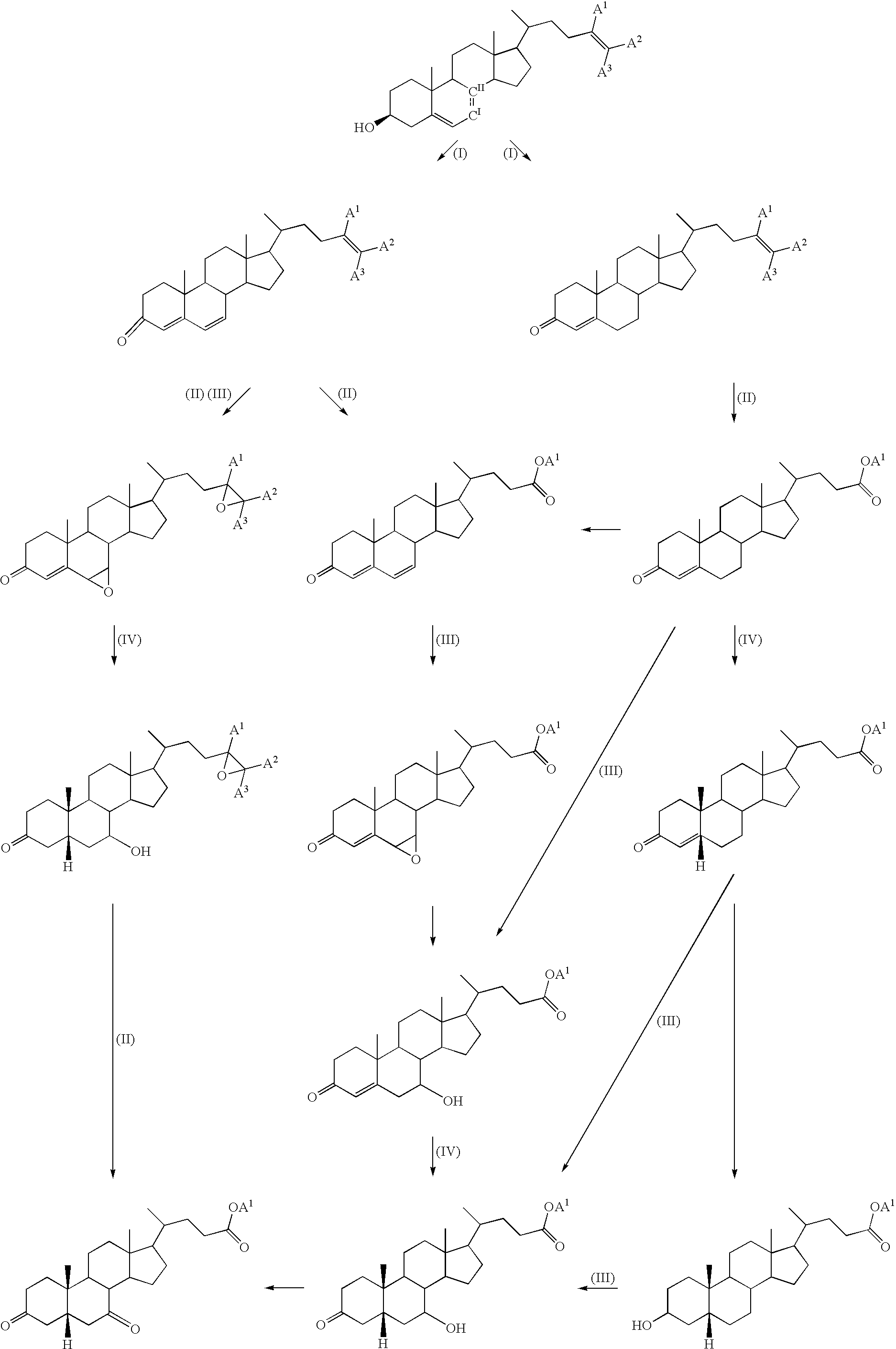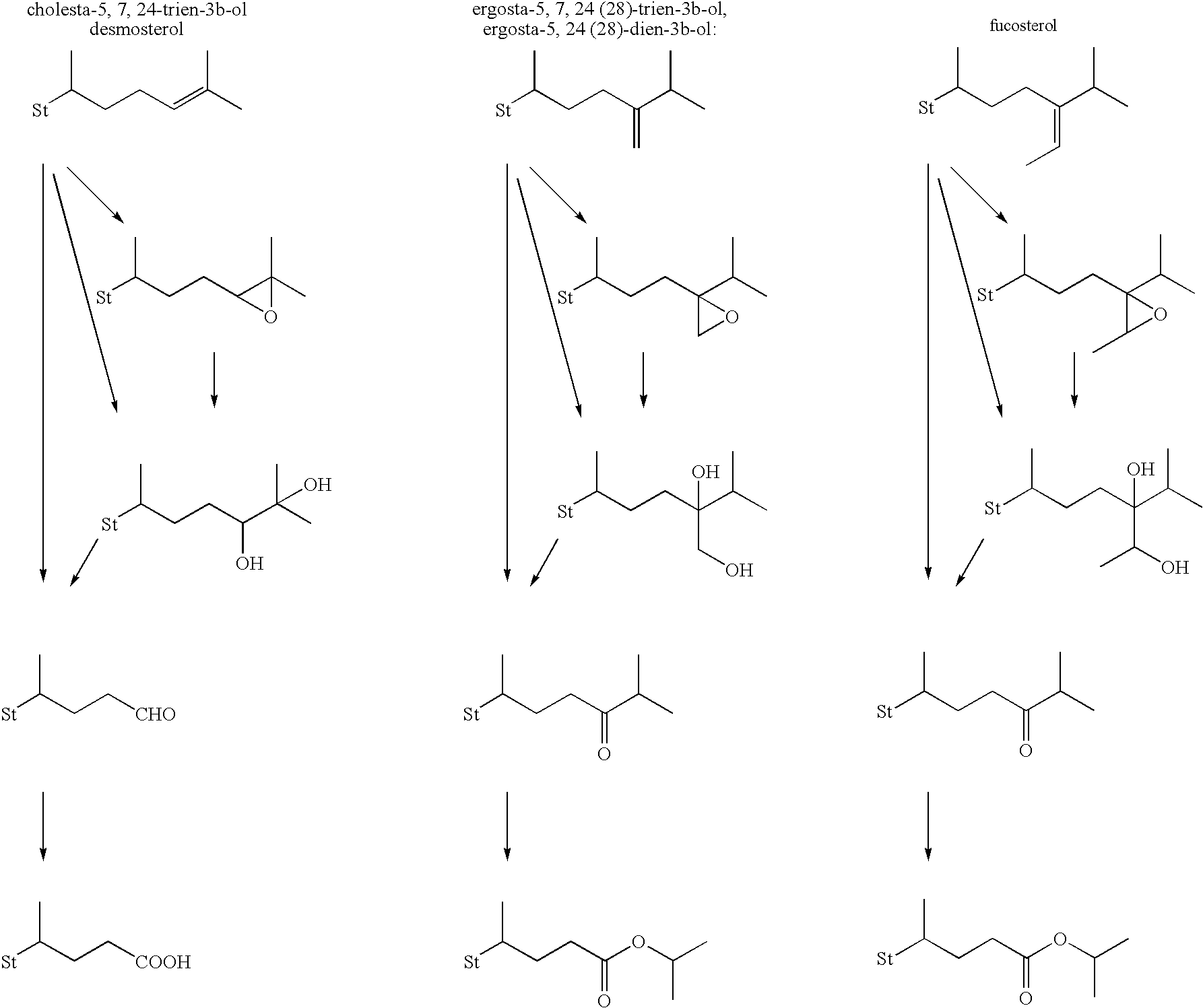Production method of steroid compound
a production method and compound technology, applied in the field of steroid compound production methods, can solve the problems of large number of steps, and high cost of raw materials derived from natural sources
- Summary
- Abstract
- Description
- Claims
- Application Information
AI Technical Summary
Benefits of technology
Problems solved by technology
Method used
Image
Examples
example 1
Production of cholesta-4,7,24-trien-3-one (compound 3)
[0261] 4.38 g (11.47 mmol) of cholesta-5,7,24-trien-3β-ol (compound 2) and 11.24 g (114.66 mmol) of cyclohexanone were dissolved in 44 ml of toluene, and the mixture was subjected to deaeration under a reduced pressure and nitrogen substitution at room temperature. This treatment was repeated several times. Thereafter, 1.17 g (5.74 mmol) of aluminum isopropoxide was added to the reaction solution at room temperature, and the obtained mixture was then stirred in a nitrogen atmosphere at 112° C. for 2 hours. After completion of the reaction, the reaction solution was cooled to room temperature, and 2.3 ml of water was then added thereto. The obtained mixture was stirred at room temperature for 1 hour. Thereafter, the deposited precipitate was filtrated, and the filtrate was then concentrated. The concentrate was isolated and purified by silica gel column chromatography, so as to obtain 4.01 g of cholesta-4,7,24-trien-3-one (compou...
example 2
Production of cholesta-4,6,24-trien-3-one (compound 4)
[0262] 3.49 g (9.18 mmol) of the cholesta-4,7,24-trien-3-one (compound 3) obtained by the method described in Example 1 was dissolved in 70 ml of methanol, and thereafter, deaeration under a reduced pressure and nitrogen substitution were repeated several times at room temperature. Thereafter, 2.53 g (38.40 mmol) of 85% potassium hydroxide was added to the reaction solution, and the obtained mixture was stirred in a nitrogen atmosphere at 64° C. for 7 hours. After completion of the reaction, the reaction solution was cooled to room temperature, and 2.37 g of acetic acid was then added thereto, followed by stirring the obtained mixture at room temperature for 0.5 hours. Subsequently, methanol was distilled away under a reduced pressure, and water was then added thereto, followed by extraction with ethyl acetate. The organic layer was washed with water, dried, and then concentrated. The obtained concentrate was isolated and purifi...
example 3
Production of ergosta-4,6,24-trien-3-one
[0264] 0.20 g (0.50 mmol) of ergosta-4,7,24-trien-3-one was dissolved in 10 ml of methanol. Thereafter, deaeration under a reduced pressure and nitrogen substitution were repeated several times at room temperature. Thereafter, 0.10 g (1.52 mmol) of 85% powder potassium hydroxide was added to the reaction solution, and the obtained mixture was stirred in a nitrogen atmosphere at 65° C. for 12 hours. After completion of the reaction, the reaction solution was cooled to room temperature, and 0.18 g of acetic acid was then added thereto, followed by stirring the obtained mixture at room temperature for 0.5 hours. Subsequently, methanol was distilled away under a reduced pressure, and water was then added thereto, followed by extraction with ethyl acetate. The organic layer was washed with water, dried, and then concentrated. The obtained concentrate was isolated and purified by silica gel column chromatography, so as to obtain 0.20 g of ergosta-4...
PUM
 Login to View More
Login to View More Abstract
Description
Claims
Application Information
 Login to View More
Login to View More - R&D
- Intellectual Property
- Life Sciences
- Materials
- Tech Scout
- Unparalleled Data Quality
- Higher Quality Content
- 60% Fewer Hallucinations
Browse by: Latest US Patents, China's latest patents, Technical Efficacy Thesaurus, Application Domain, Technology Topic, Popular Technical Reports.
© 2025 PatSnap. All rights reserved.Legal|Privacy policy|Modern Slavery Act Transparency Statement|Sitemap|About US| Contact US: help@patsnap.com



